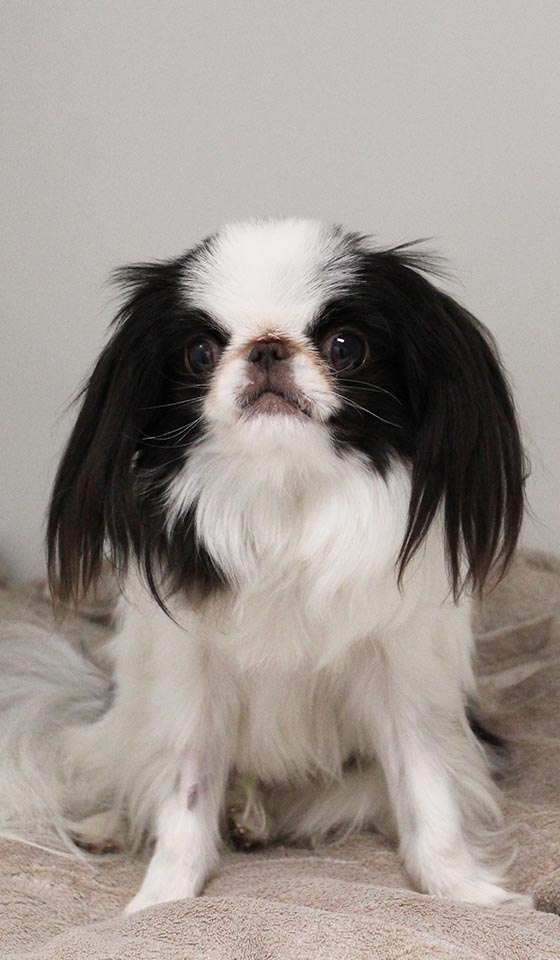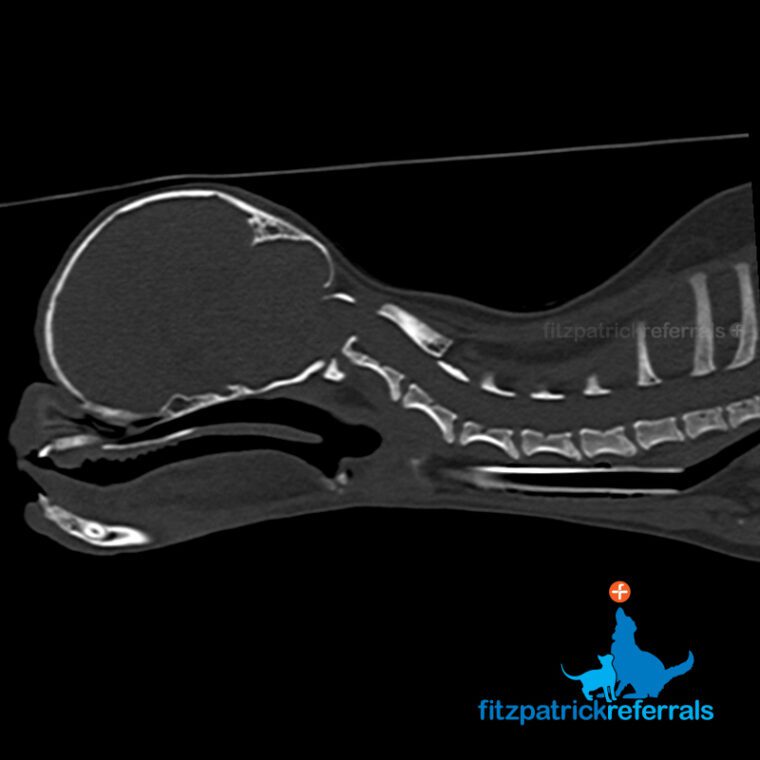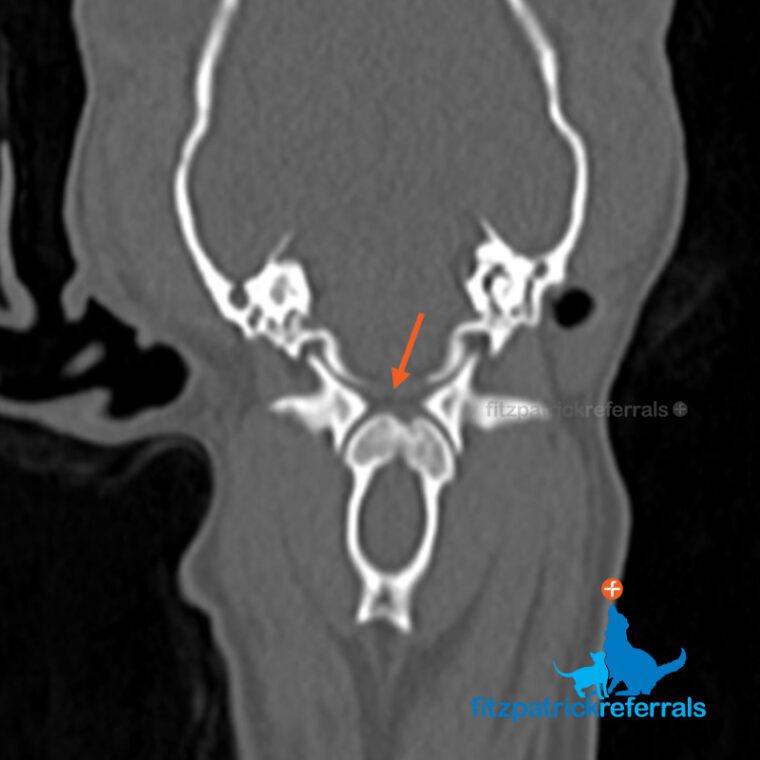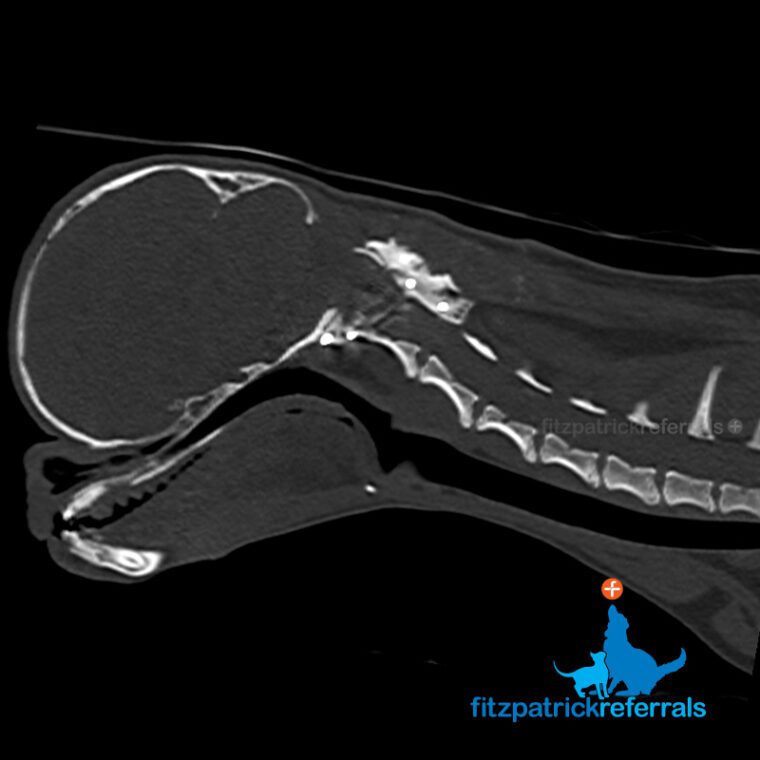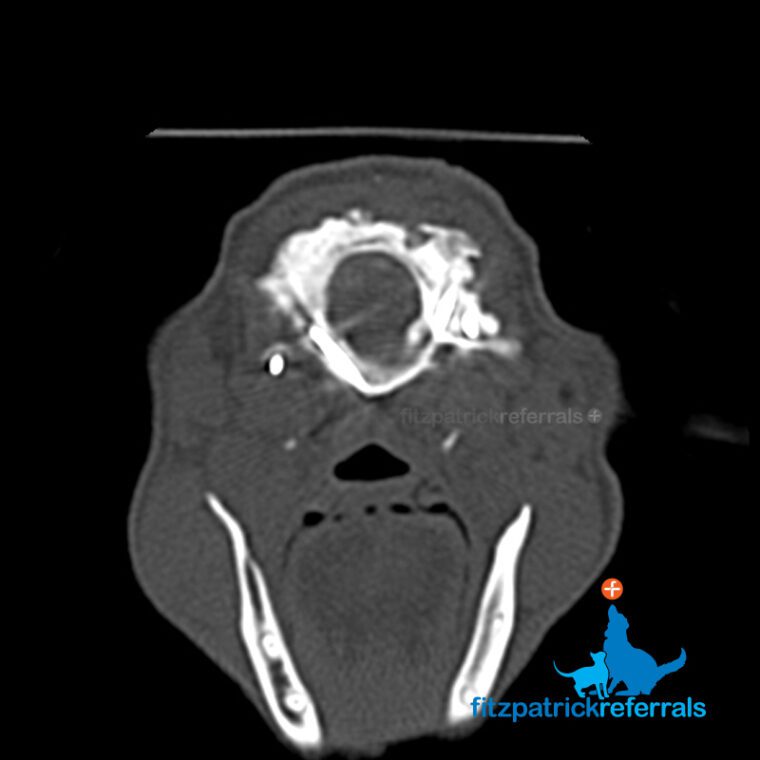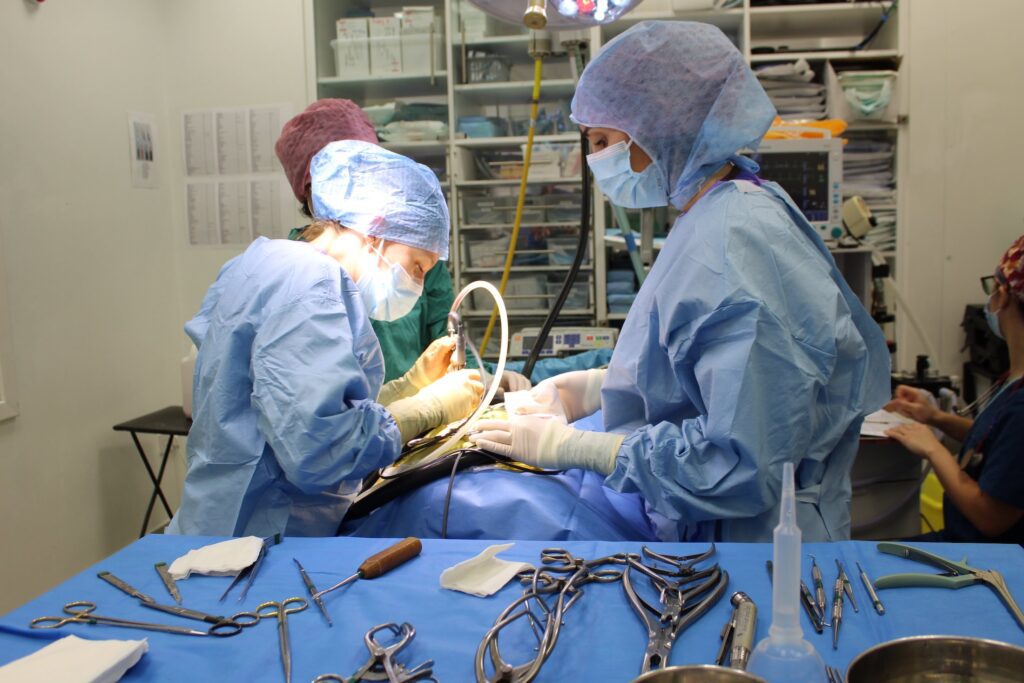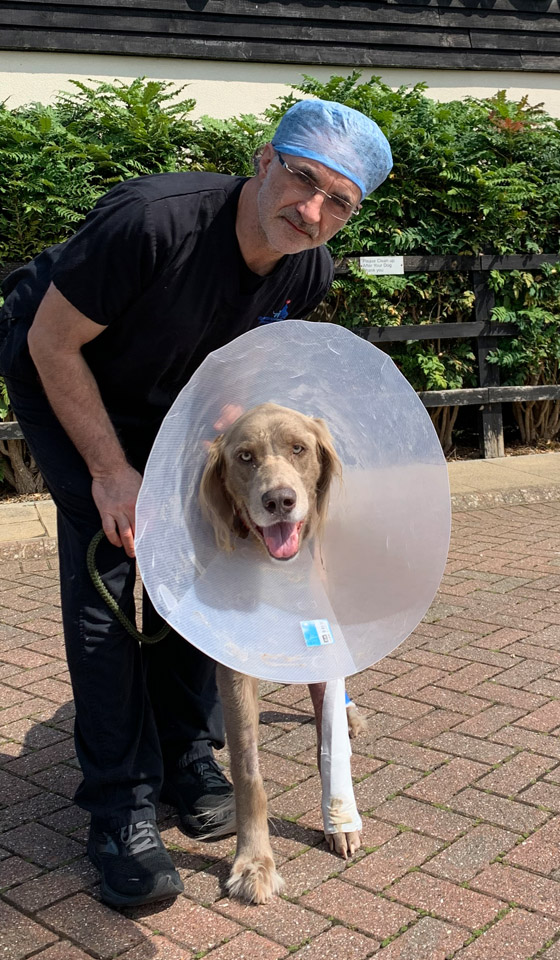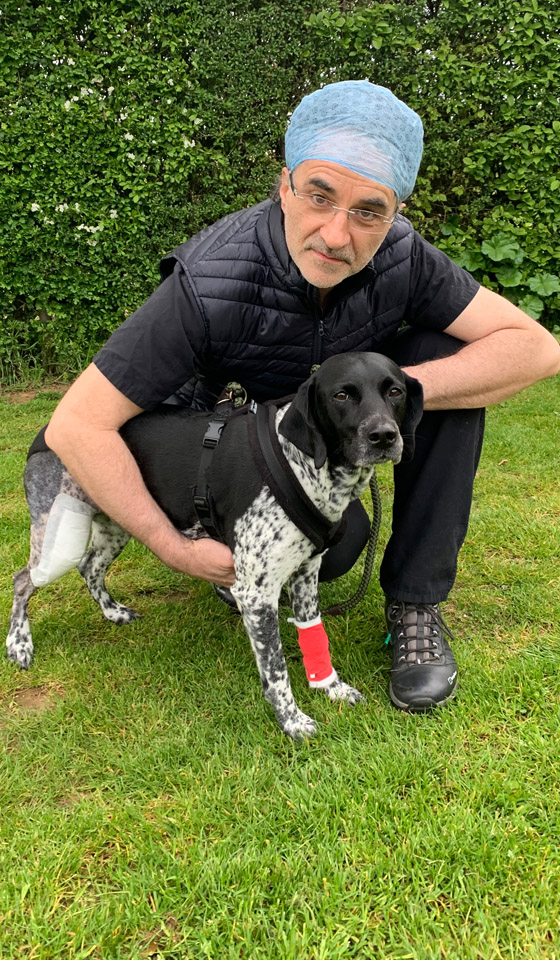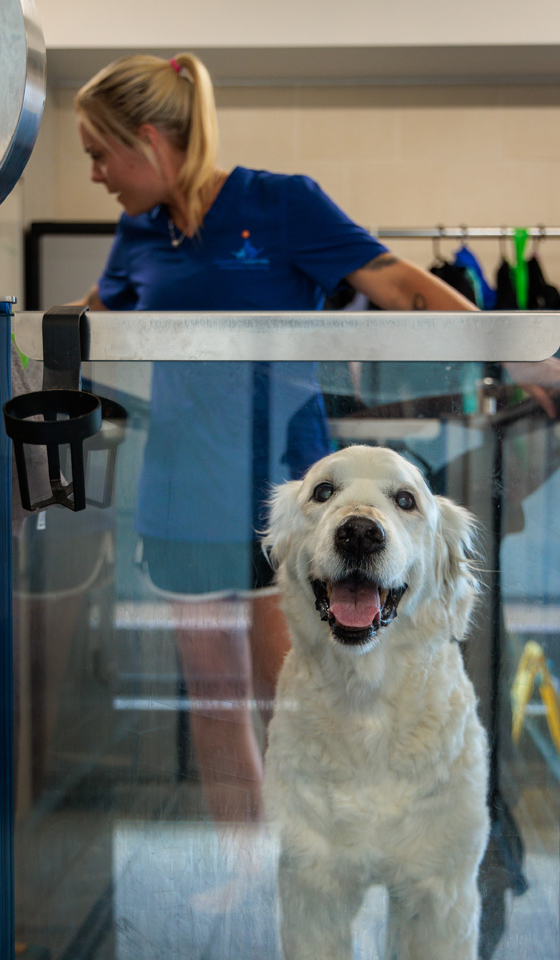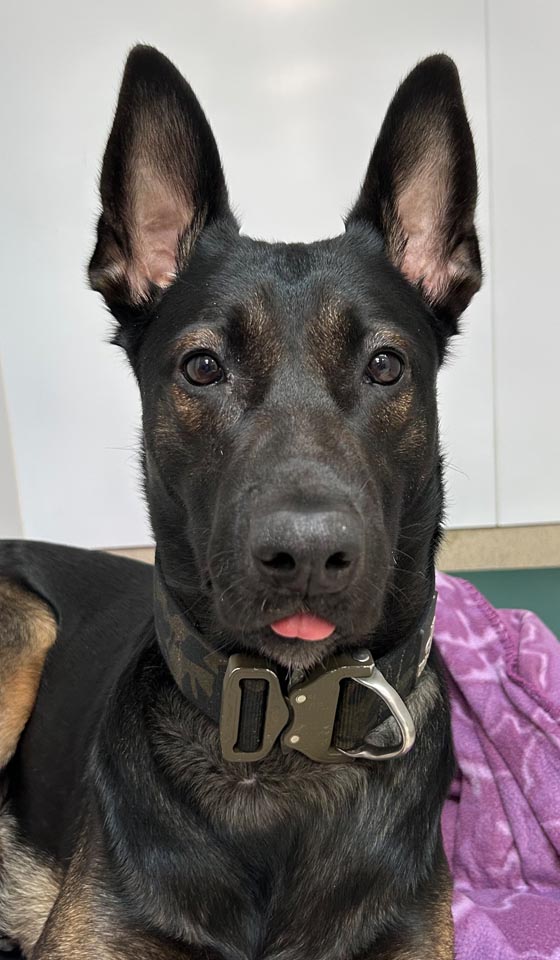Last summer, Gizmo was referred to our neurology service for chronic ataxia (wobbliness), shaking and yelping at home.
Under the care of Neurologist Carina Black, Gizmo had a neurological examination, a CT and MRI scan, and was diagnosed with atlanto-axial subluxation. This painful condition occurs when the first and second vertebrae in the neck are out of normal alignment causing excessive movement and instability in the joint which can cause pressure on the spinal cord.
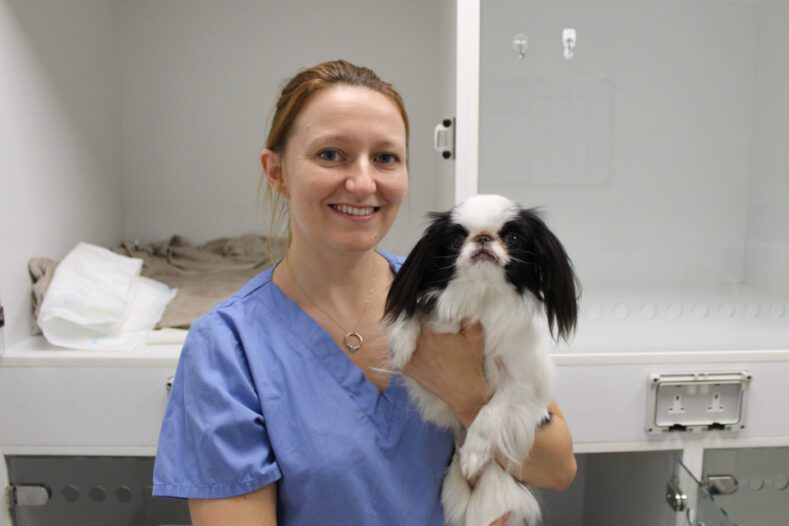
Introduction
In the summer of 2022, Gizmo was referred to our neurology service for chronic ataxia (wobbliness), shaking and yelping at home.
Under the care of Neurologist Carina Black, Gizmo had a neurological examination, a CT and MRI scan, and was diagnosed with atlanto-axial subluxation. This painful condition occurs when the first and second vertebrae in the neck are out of normal alignment causing excessive movement and instability in the joint which can cause pressure on the spinal cord.
Surgery
Neurologists Carina Black and Joana Tabanez carried out a dorsal spinal stabilisation surgery delicately placing eight 1.5mm titanium screws in the vertebrae (C1 and C2) which were then secured with bone cement. A postoperative CT scan showed good implant placement and repositioning of the subluxated joint.
Recovery
Gizmo recovered well from his anaesthesia and spent three days recuperating at the practice, lapping up lots of fuss from our dedicated team of ward nurses and veterinary care assistants.
Six weeks later, we were delighted to see him back for his re-check alongside his life-sized thank you card and kind gifts for the team.
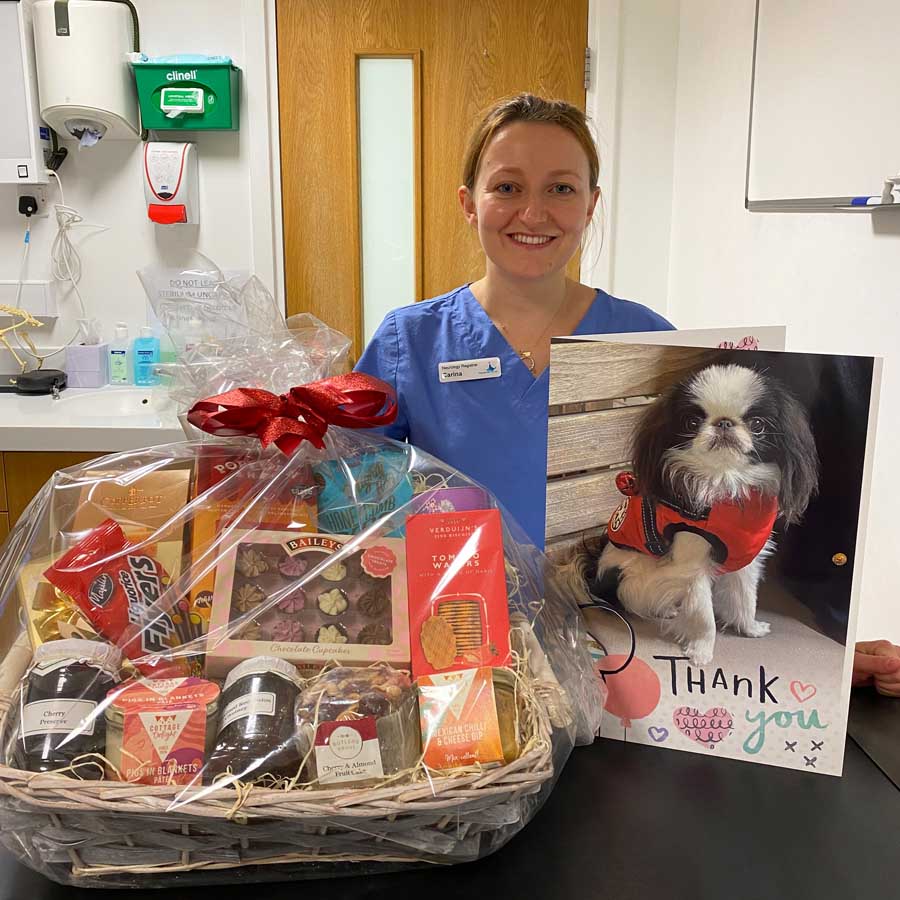
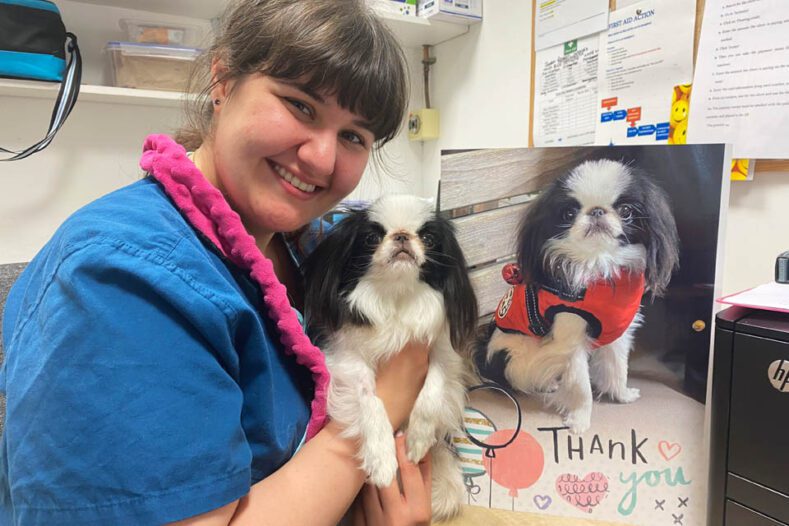
Nine months later Gizmo is enjoying his life at home, running around without being in pain or collapsing.
We miss his lovely character but are very happy he is doing well at home.
